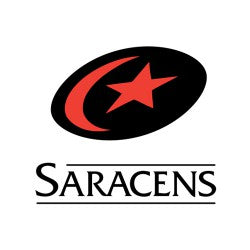Have you considered what are the specific and practical applications for the GymAware Velocity-Based Training (VBT) system?
VBT is a method of training that leverages technology to measure the speed of a specific movement during exercise sessions, often utilising tools like linear transducers or laser optic devices. VBT devices can be a valid and reliable method of estimating an individual's 1 Repetition Maximum (1RM) via submaximal load workouts (1).
The widespread adoption of this training approach by numerous practitioners has contributed to a wealth of innovative ideas. Consequently, there has been a proliferation of diverse applications for velocity-based training (2, 3, 4). While VBT training is commonly associated with monitoring the speed of bar movement, it encompasses a multifaceted range of metrics. The primary areas of focus typically encompass:
- Load-velocity profiling, 1RM predictions, and minimal velocity thresholds
- Exertion-load profiling
- Real-time feedback provision
- Safe autoregulation
- Targeting distinctive training qualities
Want to know more about VBT? Check out our recent article with Will Ruscombe-King, where we delve deeper into to how he implemented VBT training with Novice, Intermediate and Advanced Athletes.
Now, for the systems that can help utilise different modalities of VBT training.
GymAware RS
The GymAware RS is a precise linear encoder that attaches to free weights and weight machines to measure power output. It pairs seamlessly with iPads to record data and offers secure online access via the cloud, for anytime, anywhere and any place to review of your athletes’ performance.
Independently verified, the GymAware RS boasts accuracy features such as positional accuracy, angle of lift, rep detection, and a high sampling rate of 100Hz.
Other features of the GymAware RS system include:
- Records over 270 pre-defined exercises: Guaranteed unmatched data tracking and analysis across all your training programmes.
- Durable build: Lets you focus on pushing the heaviest weights with the confidence it won't break if it falls or gets knocked around.
- Integrated with an app, featuring cloud storage capabilities: It gives you access to your data whenever and wherever to analyse performance.
- Visually represents data: For easy interpretation and feedback delivery to your athletes.
- Impressive battery life: Gives you over 12+ hours of continuous use.
FLEX Powered By GymAware
The FLEX VBT device has been crafted to be both portable and lightweight. FLEX incorporates advanced laser optic technology to offer real-time feedback.
Features of the FLEX device include:
- Compact Design: Small compact design.
- Built to Last: Sturdy and reliable, ensuring longevity.
- User-Friendly: Lightweight and intuitive, perfect for both novices and pros.
- Technology Integration: Pairs smoothly with the GymAware apps, allowing for seamless data access and storage.
- Visual Performance Data: Get a graphical view of your performance metrics, simplifying analysis.
- Long-Lasting Battery Life: Offers 10+ hours of uninterrupted use.
The Main Measures
Now we understand both devices, let’s look at the system's measurement capabilities. The main measures of both GymAware devices include:
- Mean/Peak Velocity
- Mean/Peak Power
- Bar Path
- Bar Distance
Having these measurements available, allows us to determine two different assessments.
- Strength and Power Development - working within certain speed ranges elicits different types of contractions.
- 1RM Testing - a safer method using submaximal loads.
One of GymAware’s defining features is the leaderboard functionality. Promote competitive rivalry between teammates using the GymAware systems, to look at key measurements and compare in real-time, individual performance. Watch the motivation and desire to beat their teammates create an increase in their performance.

Let’s take a look at 5 of the top innovative training modalities, that are industry-recognised and being adopted and implemented by some of the leading coaches.
1. Load-Velocity Profiling and Predicting 1RM
Load-velocity profiling is a method that uses a series of repetitions, either with relative or absolute loads, to produce a force-velocity profile for a specific exercise. It is a holistic assessment to describe an athlete’s ability to perform a certain exercise or movement, typically comparing two variables: in this case, load (resistance) and velocity. The relationship between load and velocity is negatively linear—as the load increases, velocity decreases.
For example, instead of doing a 1RM back squat, which only tests an athlete’s ability to squat against maximal loads, it gives a broader insight into their skill on that movement, by using 3-5 data points. This can be used to your advantage when programming.
To generate the ‘power & force/velocity profile’, it is recommended that at least 4 sets of 1-2 reps are completed each with a progressive load. As the load increases the bar speed decreases. As this is a sub-maximal assessment it is recommended that once the bar speed drops below 0.5m/s you end the test and use the report to predict your maximum.
Minimal velocity thresholds (MVT), otherwise known as 1RM velocities, are very simple. MVTs are the average concentric velocity produced during the last successful repetition. Practitioners can use this information to identify if an athlete is attempting a 1RM or not (5).
The GymAware RS can generate each athlete’s own 1RM report within their cloud-based system. Alternatively, within the FLEX app, there is also a pre-defined 1RM test available.
Rather than the traditional method of establishing your 1RM max, the GymAware systems can accurately predict your 1RM in a safe and controlled environment. The device also detects even the smallest of movements – however for it to be a ‘valid rep’ there is a threshold. This can be adjusted in GymAware’s software – cloud or the app.
2. Exertion-Load Profiling
By implementing exertion-load profiling, you can understand how many repetitions your athlete can perform during any given set – assuming they are using max effort.
It helps you determine just how close to failure your athlete is, helping to prevent injuries. It does this by analysing data from the last rep, determining the percentage drop off in the next repetition, if this is below the set target, this will give visual and audio feedback and inform the user that the set has ended.
For example, if you go 10% below in mean velocity this may end the working set as the target has not been reached. This indicates that the athlete is losing strength and is getting close to failure. Or, if an athlete achieves a mean concentric velocity of 0.45m/s during a squat, the coach can estimate that the athlete may have approximately 3 reps left.
3. Providing Augmented Feedback
Augmented feedback uses velocity data to help you give more accurate feedback and boost athlete motivation (7).
As a coach, your ability to provide your athletes with feedback on their form, technique, and other factors that they cannot feel during the exercise is invaluable. While they may be able to feel their strength or stability increase, they can’t see their progression in technique.
Using the GymAware system to provide detailed feedback and instructions is invaluable to the progression of your athletes. It makes it easier for you to create a plan for their development, as you have the data to back up your decisions.
4. Safe Autoregulation
Autoregulation has previously been defined as “a form of periodisation that adjusts to the individual athlete’s adaptations on a day-to-day or week-to-week basis” (8).
It is all about adjusting your training approach around your athletes’ daily changes in performance capabilities. Normally, you’d have to rely on the athlete telling you, or you spot the subtle changes in their speed and form. With GymAware, you don't need to rely on either.
With data analysis being performed on every rep, as well as the ability to access the athlete’s prior data, you can easily tell when they aren't performing at their best by comparing the two data sets. This helps you adjust your training plan without putting your athlete at risk.
5. Increased Precision in Training Qualities
With GymAware, if the coach wishes to develop an athlete’s “absolute strength” in the back squat, they may prescribe a load that equates to 90-100% of their 1RM, or a maximum velocity of 0.5 m/s or less (9). This is informed via the mean velocity measure.
The precision of the GymAware devices allows for real-time feedback. As the weight intensifies, nearing the athlete's 1RM, the velocity of the movement declines. This not only mirrors the physical attributes being honed at specific 1RM percentages, but also showcases the corresponding velocity. This granular insight into specific traits, achieved through the movement's speed, stands as a testament to the distinct advantages of using GymAware systems in velocity-based training.
Conclusion
In the ever-evolving landscape of Sports Science and training methodologies especially within VBT, GymAware has positioned itself as an invaluable asset for trainers and athletes alike. It's not just about the data, but how that data is interpreted and acted upon to foster tangible results.
Remember, every rep, every set, and every session holds the potential for optimisation, and with GymAware systems, that potential becomes a reality. Give yourself the advantage and redefine the boundaries of what's possible for you and your athletes.
CLICK HERE to discover the GymAware VBT devices.
References
- Mann JB, Thyfault JP, Ivey PA, Sayers SP. The effect of auto-regulatory progressive resistance exercise vs. linear periodization on strength improvement in college athletes. Journal of Strength and Conditioning Research. 24(7): 1718-23. 2010. https://www.ncbi.nlm.nih.gov/pubmed/20543732
- Jovanovic M, and Flanagan EP. (2014). Researched applications of velocity based strength training. J. Aust. Strength Cond. 22(2)58-69.
- Flanagan E. (2016) Recent trends & future directions in velocity based strength training. [ONLINE] Available at: http://www.slideshare.net/eamonnflanagan/recent-trends-future-directions-in-velocity-based-strength-training. [Accessed 05 January 2017].
- 2017. Dr Mike Young Advantages of Velocity-Based Training – YouTube. [ONLINE] Available at: https://www.youtube.com/watch?v=od3W495fcyg. [Accessed 09 May 2017].
- González-Badillo, J.J., Sánchez-Medina, L. Movement velocity as a measure of loading intensity in resistance training. International Journal of Sports Medicine. 31: 347 – 352. 2010. https://www.ncbi.nlm.nih.gov/pubmed/20180176
- Izquierdo M., Gonzalez-Badillo J.J., Häkkinen K., Ibañez J., Kraemer W.J., Altadill A., Eslava J., Gorostiaga E.M. Effect of loading on unintentional lifting velocity declines during single sets of repetitions to failure during upper and lower extremity muscle actions. International Journal of Sports Medicine. 27: 718–724. 2006. https://www.ncbi.nlm.nih.gov/pubmed/16944400
- Zourdos MC, Dolan C, Quiles JM, Klemp A, Jo E, Loenneke JP, Blanco R, Whitehurst M. Efficacy of daily 1RM training in well-trained powerlifters and weightlifters: a case series. Nutr Hosp 2016;33:437-443. https://www.researchgate.net/publication/284179354_Efficacy_of_Daily_1RM_Training_in_Well-Trained_Powerlifters_and_Weightlifters_A_Case_Series
- Mann JB, Thyfault JP, Ivey PA, Sayers SP. The effect of auto-regulatory progressive resistance exercise vs. linear periodization on strength improvement in college athletes. Journal of Strength and Conditioning Research. 24(7): 1718-23. 2010. https://www.ncbi.nlm.nih.gov/pubmed/20543732
- DEVELOPING EXPLOSIVE ATHLETES: USE OF VELOCITY BASED TRAINING IN TRAINING ATHLETES: Bryan Mann: 9781540558824: Amazon.com: Books. 2017. DEVELOPING EXPLOSIVE ATHLETES: USE OF VELOCITY BASED TRAINING IN TRAINING ATHLETES: Bryan Mann: 9781540558824: Amazon.com: Books. [ONLINE] Available at: https://www.amazon.com/DEVELOPING-EXPLOSIVE-ATHLETES-VELOCITY-TRAINING/dp/1540558827. [Accessed 10 May 2017].



































